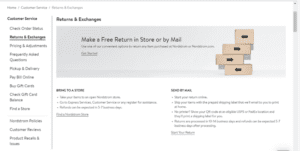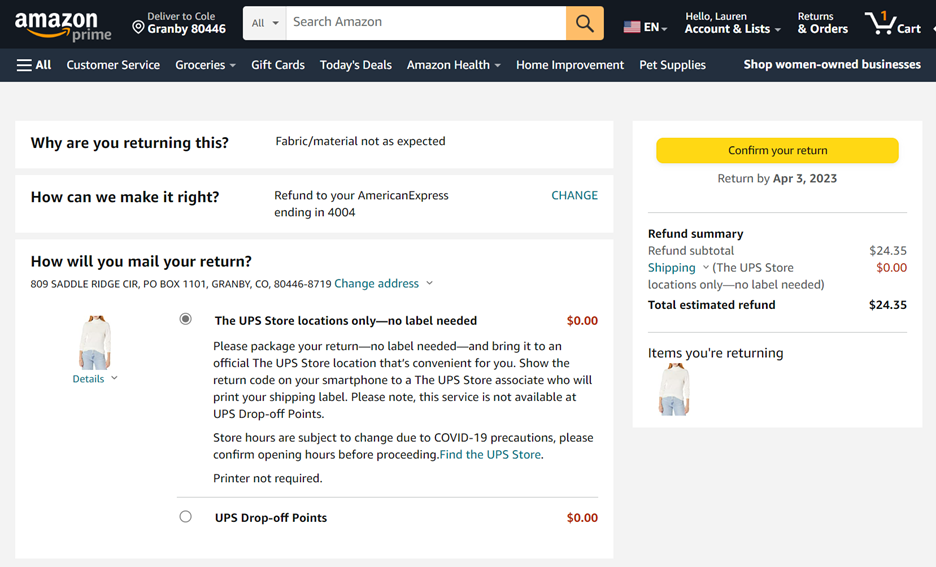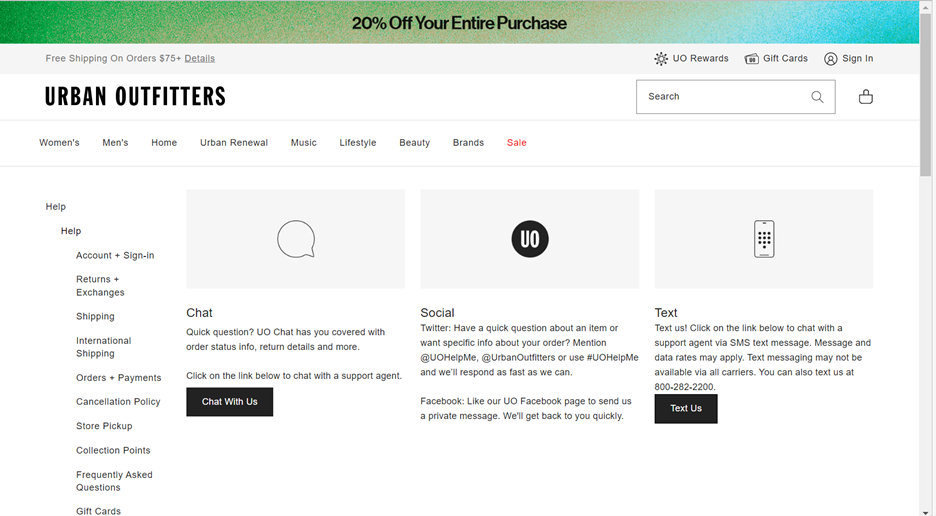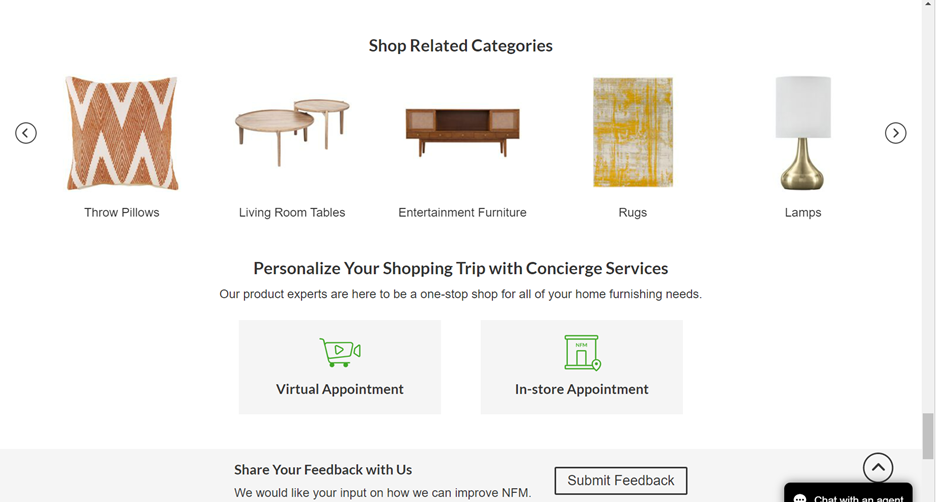Friendly reminder: Customer service drives conversion.
Digital Commerce 360 and Bizrate Insights surveyed 1,060 online shoppers in January 2023. We found insights that retailers should heed when it comes to customer service.
Return dynamics resonate with online shoppers
Online shoppers don’t want to have remorse beyond what they bought. Topping the list of customer service policies and initiatives that drive conversion are free return shipping (55%) and a straightforward, easy return policy (42%). Nobody does that better than Nordstrom. The retailer calls out both in-store and mail return options, highlighting convenience and that it applies to any item.

Nordstrom’s customer-centric return policy.
From there, the flexibility to return to a physical location beyond the retailer where they made the initial purchase (36%) and the option to return to a retailer’s store (32%) are important to online shoppers. Amazon has been a leader in this regard given its lack of physical locations. Upon visiting my return options, I select the UPS store location, which means I don’t need a label — they handle the rest. Having tested the process a few times, I’d say it doesn’t get any easier.

Amazon enables UPS returns without requiring a label.
Older shoppers have greater expectations around returns
The age gap is instructive on the return front. Older shoppers tend to be more price sensitive and appreciate free return shipping, with findings for those 55-64 (73%) and 65+ (64%) coming in against a 56% average with a wide 38% gap between segments. They also convert more when a retailer’s return policies are straightforward and easy. Once again, when it comes to where they can return, the location flexibility also leads those 55+ to convert in greater numbers.
Appointments assume a secondary role
When it comes to customer service, the most important conversion driver is the quality of the interaction, which 24% of respondents cited. Easy access to on-site customer service information (21%) and the ability to contact customer service via multiple means (19%) are formidable while virtual appointments were least significant on this front at 8%.
In terms of demographics, it’s not surprising that 11% of those 18-29 and 14% of those 30-39 — vs. an average of 7% — gravitated to virtual appointments. When it comes to the quality of interactions, the 11% gap is narrower, with those 30-39 slightly more likely to convert (31%) vs. an average of 24%.
Email and live chat (human) interactions top customer service interactions that drive conversion
Before we dig into the findings, it’s worth mentioning that 19% of the participants had no customer service interactions at all.
Traditional options like email and phone calls still serve shoppers well in their likelihood to purchase at 40% and 26%, respectively. The possibility of converting after a text interaction is strong at 21%. Interactions via social media at 12% are much lower on the list.
Chat with a human being is a force to be reckoned with when it comes to conversion, coming in at No. 2 and a conversion factor for 37%. The bot option cannot drive the same level of conversion and saw a much lower 14% penetration.
Appointments, while a convenience under COVID-19 restrictions, may have lost some of their impact. In some instances, their presence has declined. And in our survey, virtual appointments came in at 10%. In terms of shoppers being likely to make a purchase, they are at the lower end, after in-store interactions at 18% and above an appointment with an associate at 6%.
The younger mindset tells the story
It is instructive to start with those 55+ when it comes to who prefers not to interact with customer service. The segments 55-64 (31%) and 65+ (33%) measure up against the 20% average.
The younger segment 18-29 favors text (33%) more than the 20% average across age groups. And, of course, interaction via social for this same audience (18-29) is 20%. Meanwhile, those 30-39 (20%) prefer it compared with the 11% average. Live chat with a bot also made younger segments more likely to convert, at 17% for those 18-29 and 22% for those 30-39 — a 17% gap. Virtual appointments also fell into the same 17% gap with segment numbers for those 18-29 (18%) and 30-39 (17%), each significantly higher than the 9% average.
Urban Outfitters plays to its audience with chat, social and text options, presenting them via their contact us page.

Urban Outfitters offers many customer service touchpoints
Nebraska Furniture Mart dedicates prominent real estate on its site to ensuring a personalized shopping experience. Both virtual and in-store touchpoints are available based on shopper interest.

Nebraska Furniture Mart embraces virtual and in-store appointments
One of the few where an older audience found greater conversion post-interaction was the phone call with customer service. There, segments 35-64 (31%) and 65+ (39%) preferred it compared with a much lower 18% average.
Retailers should revisit their customer service policies frequently to ensure they are in line with both competitors and the best in the industry. Interactions can vary by type, but retailers should be focused on the quality of each interaction. Lastly, it never hurts to know your shoppers and ensure you make available the touchpoints that matter to those segments. So always remember: strong customer service drives conversion.
Sign up
Stay on top of the latest developments in the ecommerce industry. Sign up for a complimentary subscription to Digital Commerce 360 Retail News.
Follow us on LinkedIn, Twitter and Facebook. Be the first to know when Digital Commerce 360 publishes news content.